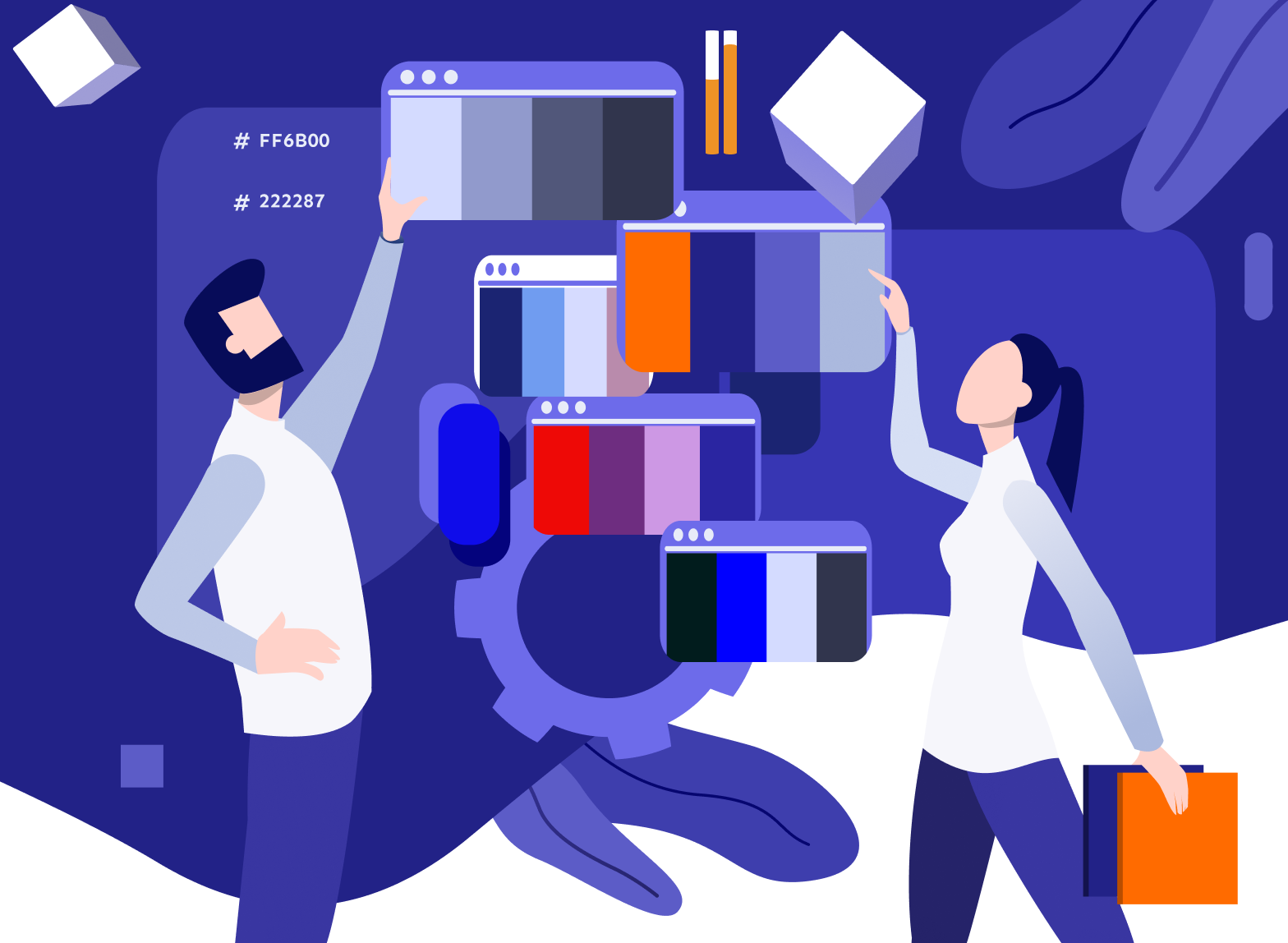
Well-designed interfaces have the ability to attract attention and enhance user experiences. From invoking emotions to conveying a message, colors are a central part of UX/UI design. To design the perfect UI, it is essential to have an understanding of color and design trends.
This article explores the role of colors in UX/UI design and evaluates the key features that are central in creating the perfect user interface.
Importance of Colors in Design
Even though most brands prefer to focus on their copy and general design, color dynamics are an underrated part of the design. Colors have the ability to communicate sentiments and emotions without explicit mention of the message. Throughout the browsing experience, colors are often the first elements that stand out and communicate the visual experience.
The right gamut of colors can play a key role in setting the mood and conveying the general tone of the brand. Appropriate color selection can also be instrumental in improving the readability of content. Throughout design language, colors are used as effective tools to improve navigation and inspire instinctual behavior.
Across design, colors are a central part of designing call-to-actions and influencing user behavior. In a holistic capacity, colors are an essential part of creating a user-friendly design. When done right, color implementation in design can be a significant factor in driving conversions. According to a recent study, over 65% of people expressed an affinity to buying products in their preferred colors.
Fundamental Factors Regarding Colors
Effective UI design is about creating interfaces that are enjoyable to use. Colors are a significant building block of the broader design experience. Color psychology can have a monumental impact on user decisions and invoke a strong response. Tapping further into color dynamics can help designers create better user experiences.
Color Perception and Genders
Color affinity changes significantly between genders as well. According to recent research, men prefer black, white, and grey colors, whereas women pay more attention to red and blue colors. This tendency is used by brands to personalize their digital design to attract their primary target audience. Companies like Mercedes use black and grey colors to make the experience more attractive for their core audience.

Brand Philosophy and Colors
Several key studies point towards the connection between colors and brands. This makes colors a key part of decision-making when it comes to your brand or service. Across brand marketing, keeping color consistency is an important factor in improving brand recognition and enhancing future sales. Branding colors are the centerpieces of communicating the brand's visual story. The combination of colors used needs to translate across all the design elements created by the company.
Color Messaging
To effectively implement colors in UI, it is important to understand the impact colors can have in invoking emotions. Leading global brands, including Coca-Cola and McDonalds, implement colors to communicate brand values.


Here are some of the emotions that are associated with colors.
- Effect of Warm Colors – Colors like red, orange, and yellow communicate warmth and comfort. The culmination of these colors is used by brands to signal warm emotions towards their potential customers.
- Impact of Cold Colors – Colors like blue, violet, and green are associated with trust and contemplation. Technology brands including Skype, IBM, and HP implement these colors to improve trust due to the nature of their business.
- Implementing Natural Colors – Natural colors offer a great way to connect with audiences and communicate the values of freedom. Several researchers have associated the use of natural colors with feelings of calm. Brands like Aquafina use natural blue colors to convey the soothing nature of the product.

Ideal Color Combinations to Consider
Having a clear understanding of the right color combinations can be a great way to come up with a user-friendly design. Even though the specific color combinations depend on your brand strategy, here are some key tips to help you come up with a better design.
Managing Color Contrast

The combination of colors is a great way to create contrast. Contrast allows the separation of elements and helps enhance the focus of central elements. A key example of this practice is the use of a light-colored background along with a bright button to manage the color contrast. Effectively using contrast across design can be a great way to improve calls-to-action. The same phenomenon is extremely important when it comes to menu design. Maintaining a consistent separation between the key elements through contrast can have a significant impact on your design.
Shifting to Vivid Colors
Adding vivid colors to your design can be a great way to create eye-catching user interfaces. It is easier to remember a product associated with a specific color. A great example of this phenomenon emerges from the fact that users can easily associate the color black with Uber and the color blue with Facebook. To enhance the impact of this effect, bolder colors are a great way to create a standout user experience. However, to properly implement this combination, it is essential to strive for the right balance when it comes to colors and typography. Effective design proportions can be made through planning to create a well-balanced color palette.
How Leading Brands are Implementing Colors
The biggest brands in the world are clearly aware of the impact colors can have on psychology and consumer decisions. From logos to branding elements, the biggest companies choose colors that convey their core values
Here are some key examples of companies using colors to communicate their brand values.
- Coca-Cola uses the color red to communicate energy and passion. The colors are consistent across the signature company logo and branding materials.
- EasyJet group uses the color orange in its branding to communicate warmth and openness, which is a trait directly relevant to the travel and exploration business.
- Beauty brand Damas uses the Golden color in its branding to convey the regal nature of the business along with a referral to the gold-centered products of the company.

Conclusion
Even though it can be complicated to find the right balance between color and design, putting in the effort can have major positive impacts on user experience. Especially in the world of visual design, colors are a key cornerstone for user perception. Like other parts of life, practicing combinations and embodying creativity is essential to reach the right results. Observing existing trends and embodying them in your design approach can cut out your efforts and help you fast-track your visual design.
To learn more about using colors in UX/UI, keep up with all the latest updates from Algo.id. We're committed to simplifying digital usage and design by sharing insights from experienced designers.








